What Happened?
Yesterday, July 16th, was the 29th day of Ramadan in the Islamic year 1436, or common era year of 2015. It was a day of great anticipation. Will we see the moon and end the fast or will it go on for another day? This Ramadan started without any contention at all! It was a refreshing respite from all the drama that is usually associated with the starts and stops of the Islamic months due to the confusion about seeing the new crescent moon. But as far as I could tell, the entire Muslim world began fasting on the same day! One week into the month, I started looking forward to the end of the month not to determine the if the moon would be seen or not, but to get a handle on if we would face a chaotic evening of chasing down errant reports all over the world. I researched two primary topics: crescent visibility probability curves and weather history.
The probability curves for July 16th are shown below. How they are generated is a topic on its own and is based on regression models and requires oodles of data from past sightings. The more data you have the more accurate the curves will predict the probability of seeing the new crescent. The curves are broken down into various regions shown by the different colors indicating how easy it will be to see the crescent. Zone A: easily visible to the unaided eye, Zone B: visible under perfect atmospheric conditions, Zone C: visible to the unaided eye after found with optical aide, Zone D: only visible with binoculars or conventional telescopes, Zone E: not visible with conventional telescopes, Zone F: below Danjon Limit (7°). Click on the image for a larger view.
Now before I go on let me qualify something. I started sighting the moon over 20 years ago. I have gone to look for it every month. I have seen many moons. The majority of those 20 years of sighting were made with no prior astronomical or probability prediction knowledge. I would always just based the sighting day 29 days later from the previous day I saw the moon. That is all one needs to know.
However over those years one gets to know what the moon looks like, where it will be in the sky in any given season, what orientation the moon will have and so on. Slowly as crescent moon sighting became more contentious I began to bolster my empirical knowledge with astronomical and probabilistic tools. I also started to teach astronomy, first at the elementary public school level and slowly moving up to higher levels until now at the college level. Now coupling both the 20 years of empirical knowledge and with some science it is not difficult to predict if the crescent will be seen, especially in one’s own locality.
So as I looked into where the moon might be seen yesterday what I noticed was that the best place on the planet was out in the South Pacific. Should not be a problem, no one lives on the water. However South America could have reports. In the last several years we have had some very strange and unverifiable reports coming from the south especially from Chile. But most of South America was in the Zone B, and given perfect atmospheric conditions – meaning the skies needed to be totally clear we very well could receive reports from there. So I looked into the weather history of the region in Chile where we have some contacts that have given us reports in the past.
In the month of July South America is in the midst of winter and in Chile 67% of the month of July is under cloudy and overcast skies. I did not think a report from Chile would come in this year. However, yesterday evening, Chile had clear skies! The interesting result is that Chile had a negative sighting as well as all of South America, except for one report coming out of Bogota, Columbia, and that sighting was with a high-powered telescope.
Why is that important? For one it was made with a telescope and that does not constitute a valid sighting according to Islamic Law. Second it was a high-powered telescope. Why? If you look at the lunar age of the moon in the best location in Zone A it is only 23.11 hours past conjunction. And in Zone B, where the telescope sighting was made it was only 19.03 hours old past conjunction. Conjunction is the instant of the birth of the new moon.
A 23 hour old moon is very difficult to see by the unaided eye, if at all. Here is just such a moon from ten years ago. The Islamic month was Rajab, and it took place on August 5th, 2005, almost ten years ago to the month. Click on the image to see it in full.
Last night, the contentions for the sightings did not come from where we expected them, South America. They cropped up from my own backyard here in the San Francisco Bay Area and a couple other places in California. In California, the age of the moon was roughly 24.8 hours old. Not much older than the moon shown in the photo above. In San Diego, it was 24.35 hours old. In San Francisco, 24.88 hours old. In the middle of the state 24.82 hours old. This time of the year, the orientation of the crescent is as shown in the photo. The limbs should run from about 2:00 to about 7:00 o’Clock on the clock dial. This orientation of the moon’s limbs changes through the seasons. In the summer and winter it is oriented as shown in the photo, with some slight variations, while in the spring the lit portion is on the bottom and the limbs point upwards and in autumn a bit more steeper running from 1 o’Clock to about 6 o’Clock. This is important as we will see below, so keep this in mind.
The sighting curves are based on five parameters that need to be met in order for the moon to be seen easily by the unaided eye. Those parameters are, age of the moon beyond conjunction, the time between sunset and moonset (known as the lag time), the elongation (a geometric orientation of the Earth, Moon and Sun past conjunction), the % illumination of the moon and the altitude of the moon at sunset above the horizon. The criteria for sighting a moon with the unaided eye are as follows:
Age: 18 hours
Lag time: 40 minutes
Elongation: 12°
% Illumination: 1%
Altitude: 5°
Let me further qualify what these values indicate. Neither one is more important than another. The probability of the moon’s visibility cannot be determined by just one or two of these parameters. Each parameter needs to be met. The values given here are the absolute minimum values that are needed for the moon to be seen by the unaided eye. Now just because the age of the moon is greater than the minimum 18 hours will not alone make it visible, especially if for example the lag time is less than the 40 minutes. Likewise, if the moon’s age was, for example, 28 hours old, but the lag time was say 15 minutes or that altitude was only 2°, the moon will still not be seen by the unaided eye, or it will be very difficult at best.
The conditions for the moon shown above from 10 years ago were:
Age: 23.5 hours
Lag time: 46 minutes
Elongation: 11°
% Illumination: 1%
Altitude: 8.1°
With 4 out of the 5 criteria met, and the 5th, elongation, very close, I still could not see this moon with my unaided eyes. How then did I get this photo you ask? I had a general idea of where the moon should have been in the sky and I pointed my camera lens in that area and tripped the shutter. I actually made several photos panning the sky making sure I had sufficient overlap. I was amazingly surprised to have caught the moon in the photo!
Yesterday in the SF Bay Area, in the same location as where the Rajab photo of 2005 was made, the moon had the following conditions:
Age: 24.85 hours
Lag time: 20 minutes
Elongation: 13.3°
% Illumination: 1.3%
Altitude: 3°
Yesterday’s moon only meets 3 out of the 5 criteria. The above pictured moon met 4 out of 5 and was still not visible with the unaided eye. I am not sure how yesterday’s moon was seen. In the areas where the moon was claimed to have been seen, the same 3 out of 5 criteria as well were met.
Here is the interesting result. In Chile, where it could have been seen, the criteria were:
Age: 20 hours
Lag time: 46 minutes
Elongation: 11°
% Illumination: 0.9%
Altitude: 9°
3 of the 5 criteria were met and the other two were very close to meeting the limits, and yet it was not seen!
What is more concerning is that the majority of the reports that we obtained by speaking directly to the claimants, did not describe the moon as the moon seen above in the photo of what a moon of this season and timing should look like. One description given was a line that was flatter, oriented more towards the bottom with limbs more like 4 o’Clock to 7 o’Clock. Two of the reports said that what they saw suddenly became very bright and shiny when they saw it.
All the of the claimants giving reports mentioned that they saw it very shortly after the sun set, within 2 to 7 minutes after sunset. One of the claimants, reported that what he and his group saw appeared before the sun set. Before sun set!
The first question that needs to be asked is does a person engaged in sighting the moon need to versed in astronomy and in particular the details related to the moon? The answer is no. I did not have that knowledge when I first started looking for the moon, but with experience these particulars become second nature. Having knowledge about what the moon looks like in the sky, where in the sky it will appear, and its orientation will serve the seeker in not making erroneous sightings. Any person can become a skilled moonsighter whether they are an upright Muslim or not. The character of an upright Muslim is not a shield that prevents erroneous sightings from being made. At the same time an erroneous sighting made by an upright Muslim does not in any way imply anything about the person’s character. Inexperience and ignorance of the details about the nature of the moon is what brings about the erroneous reports but does not put the person’s character in question.
Moving on, the optimal time of crescent visibility on the evening of a new moon occurs when the the contrast between the moon and the evening sky reaches its maximum. Two things need to happen for this maximum contrast to occur. First, the sky needs to darken and at the same time as the sky darkens, the moon starts to brighten. Maximum contrast takes place at 4/9ths of the lag time. That is, the lag time is taken and divided into 9 parts. Then adding 4 of those parts will indicate when the best viewing time occurs. Last night here in California, with lag times of 20 minutes, 4/9ths amounts to 8 minutes and 53 seconds after sunset. And for an easily seen moon, with a lag time of 40 minutes this amounts to 17 minutes and 45 seconds. So, one would need almost 18 minutes for the moon to reach the optimal contrast in the sky for a moon that is easily seen by the unaided eye. Last night, the moon only had a lag time just slightly longer than the optimal time. Far from ideal. At 2 to 7 minutes after sunset, the sky would be so bright and the crescent so dim, that it is nearly invisible at that time. And before sunset, if the sun itself does not blind the eyes, its brightness will certainly limit anything you can see in the sky near the sun.
We live in a time in which our skies are filled with many flying objects. Objects that did not exist at the time of the Prophet Muhammad, peace be upon him, and not for more than 1000 years after His time. Those flying objects leave many traces in the sky that can easily be misconstrued as the crescent moon to the inexperienced and unskilled seeker of the moon. Here is a link to a small gallery of photos of just such traces that can easily be mistaken for the moon. And in fact, many times when interviewing claimants, these are the exact items that they describe to us. Here is the link
I do not know what those claimants saw on Thursday evening. I am not accusing anyone of anything. They saw what they saw and they reported it as such. They were honest and sincere, and may they be rewarded accordingly by our Creator.
What concerned me in this whole affair is why were their reports not examined with more scrutiny by those who were charged with making a decision about breaking the fast? There were more details involved than I have mentioned that needed to be addressed. I and another friend working with me did. Before we even had spoken to half those claimants who had a report, the decision to break the fast, based simply on that those reports were made, had already been made by most mosques and organizations. Confusion was rampant all night long.
So what happened last night? I am not entirely sure. I was content and certain the moon had not been seen. My Ramadan did not end last night. I was not even going to voice my concerns as over the years I have learned this only stirs the drama pot and makes things worse. That was until I saw this…

A Minion Eid
This is, in a sad and hilarious way, what I feel is happening. My pressing question though is, the Minions of Who? Minions of the One Eye, the Nafs…Who?
Later tonight I will be heading out once more to seek out the new moon. I will of course be photographing it and it will, insha Allah (God willing) be posted here on Organic Light Pan.
I wish everyone, and I mean everyone, a most Blessed Eid, filled with love, laughter, family, friends and joy, and may you receive all the rewards of fasting the month of Ramadan. May our Creator forgive us all for our mistakes and trespasses and bring our hearts together in love and brotherhood and sisterhood.
To all, Eid Mubarak and Peace!
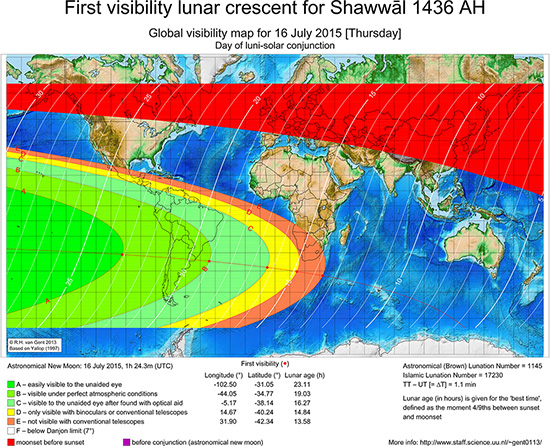
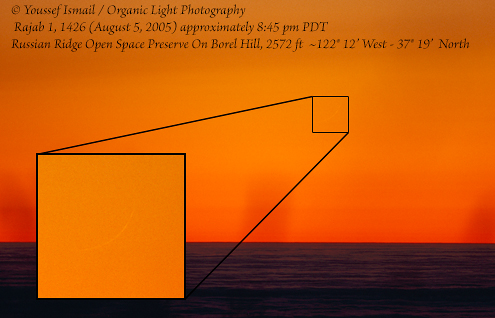
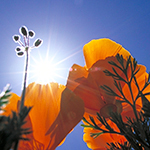





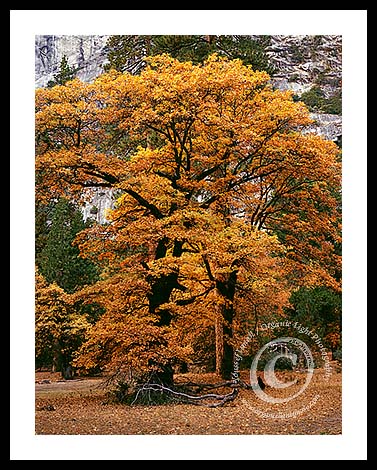
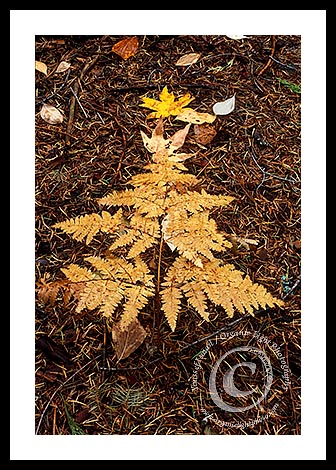
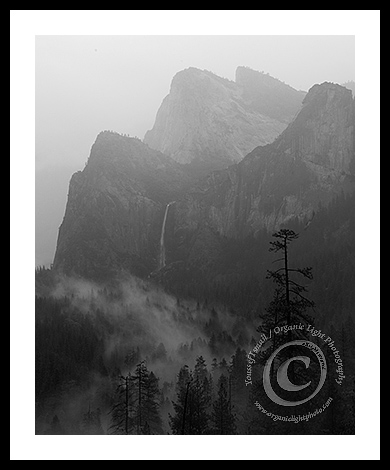
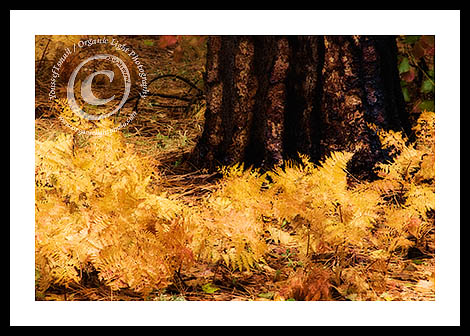
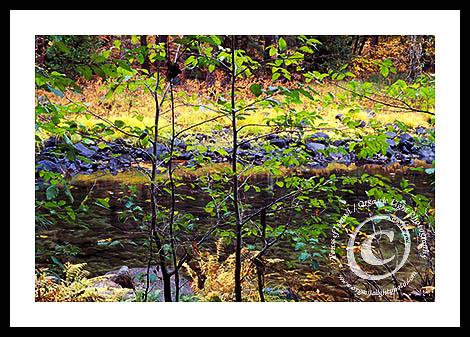
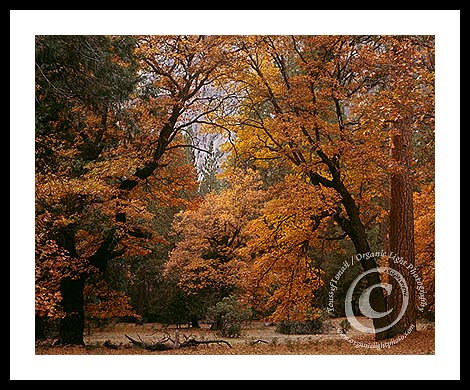
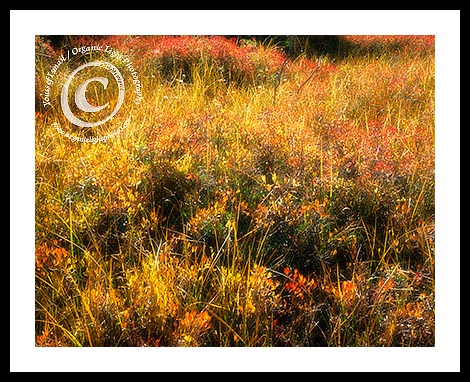
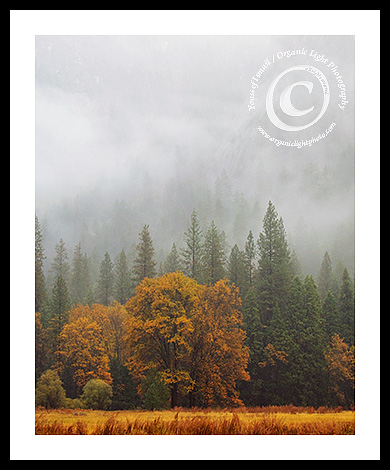
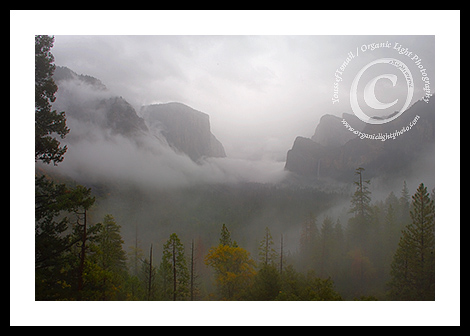
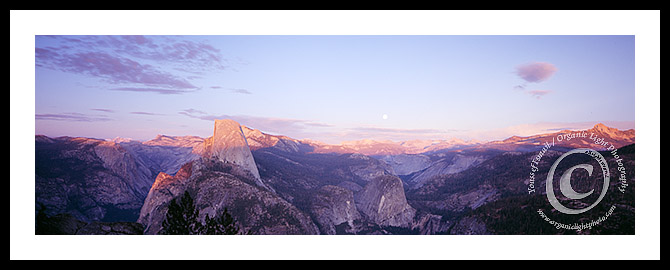
Victor Nasser on 23 Jul 2015 at 4:24 am #
Thank you for sharing your thoughts and comments. May Allah reward you with goodness 🙂
Hasbullah on 23 Jul 2015 at 12:12 pm #
Assalaamu Alaykum Dr. Youssef!
I am reading such information for the first time in my life. Thank you very much. The region where I am currently in – Southeast Asia – does not fall under anywhere from zones A to E, nor does it fall under the zone where ‘Moonset was before Sunset’. I guess therefore that it is under zone F (though the white space is not shown on the map).
That means the moon was – if I understand the map correctly – less than 10 hours old when it set. We could have waited another 10 hours and 20 minutes for news from the people living in zone B before we entered Fajr but it would have been too late. We should therefore have fasted on Friday 17th July. But no! we were celebrating Eid. That was based on the following declaration by the authorities in Singapore.
Here is the link to the announcement by the Mufti of Singapore.
http://www.muis.gov.sg/documents/Syawal_announcement_in_English.pdf
So what is this Imkan ar-Ru’yah that is mentioned here? Could it have been “possible” to sight the moon? According to your explanation it is impossible. Why do they therefore call it imkan ar-ru’yah. It was just less than 10 hours old before setting!
I remember hearing the same imkan ar-ru’yah last year if my memory is not failing me now. Do I have to make up two fasts then?
What a disaster!
Aziz on 23 Jul 2015 at 1:23 pm #
Assalamualikum Dr. Youssef,
Jazakhumullahu khairun for writing this article, I benefited from it greatly and I shared it as well on facebook. Someone thereafter brought the following article to my attention (which contains transcripts from people involved in this sighting) and I thought I bring it to your attention:
http://www.central-mosque.com/index.php/Civil/california-moon.html
From what I surmised from the article, 6 out 10 people on Mount Tamalpas claimed to have seen the moon that day. 4 weren’t able to. They weren’t able to take a picture of it either.
My question is whether altitude (~2700 ft) could have aided them. Because I read a bit about the Yallop Algorithm employed to calculate the visibility plots (http://www.staff.science.uu.nl/~gent0113/islam/islam_lunvis.htm) and the researchers noted:
“A Cautionary Note on Using the Global Lunar Crescent Visibility Maps
Note that these world maps are only indicative and assume average observing conditions near sea-level. In rare cases of exceptional atmospheric transparency, such as can be found in dry desert-like regions and at high altitudes, it may be possible to view the lunar crescent outside the nominal visibility zones.”
– “assume average observing conditions near sea-level” is what’s flashing at me. The brothers at Mt. Tamalpas was ~2700ft above sea level (they were at the peak above cloud cover). Which raises another question: would the moon sighting of a passenger/passengers on Jet liners at 40,000 ft cruising altitude be considered a legitimate sighting of the moon? Or, someone on hot air balloons?
I think I will spend sometime to review the bounds and conditions of the Yallop algorithm – http://www.staff.science.uu.nl/~gent0113/islam/downloads/naotn_69.pdf
Khurram Hassan on 24 Jul 2015 at 4:14 am #
Thank you for your message Dr Youssef Ismail and I look forward to your email. You can consider putting this message on your forum if you wish but these are a few issues.
My problems that require your help are
a) Is the Danjon limit disputed?
A H Sultan’s paper is well-known
https://www.staff.science.uu.nl/~gent0113/islam/downloads/sultan_2007.pdf
b) Yallop’s dataset and regression model: did it take into account rare cases of exceptional atmospheric transparency, such as can be found in dry desert-like regions and at high altitudes.
See this cautionary note from the University of Utrecht: https://www.staff.science.uu.nl/~gent0113/islam/islam_lunvis_method.htm
“A Cautionary Note on Using the Global Lunar Crescent Visibility Maps
Note that these world maps are only indicative and assume average observing conditions near sea-level. In rare cases of exceptional atmospheric transparency, such as can be found in dry desert-like regions and at high altitudes, it may be possible to view the lunar crescent outside the nominal visibility zones”
c) My next point pertains to the jurisprudence of the issue pertaining to the epistemology of the matter with the Fuqaha,
I’ve not studied the maliki madhab have not taken from a Maliki teacher the following two questions:
1) If Imam al-Qarafi’s position to dismiss astronomically ‘impossible’ moon-sightings is the mu’tamad i.e relied on position of the madhab?
and
2) What the criteria of Imam al-Qarafi for arriving to definite astronomical knowledge to dismiss moon sightings?
Your answer or an answer of an Maliki teacher would be much appreciated.
In the madhab of Imam Shafii, one major scholar, Ibn Hajr alHaytami, takes an opinion that is contradicted by his peers saying the following,
وَاَلَّذِي يُتَّجَهُ مِنْهُ أَنَّ الْحِسَابَ إنْ اتَّفَقَ أَهْلُهُ عَلَى أَنَّ مُقَدِّمَاتِهِ قَطْعِيَّةٌ وَكَانَ الْمُخْبِرُونَ مِنْهُمْ بِذَلِكَ عَدَدَ التَّوَاتُرِ رُدَّتْ الشَّهَادَةُ وَإِلَّا فَلَا
“… the stronger opinion is that astronomical calculation if the astronomers are agreed upon it’s premises that are certain and that the number of those informing us from them (ie astonomers) reaches a number that it’s impossible for them to have lied or agreed upon a mistake (the concept of tawatur or consensus) then the sighting of the moon is rejected. If these conditions are not fulfilled then it (the moon sighting) is not (rejected).”
So three conditions need to be fulfilled for sightings of the moon to be rejected by Ibn Hajr in his tuhfah (and remember his peers Ramli and Khatib and the Hanafi madhab disagree with him; I remain unsure of the maliki opinion):
1) certain premises to astronomical calculations
2) astronomers agreeing upon these premises
3) The astronomers reaching a level of consensus
How do we interpret the visibility maps with regars to these three conditions?
I hope that you can reconcile these issues.
With much thanks for your informative blog,
your brother,
Khurrram
Youssef Ismail on 24 Jul 2015 at 5:33 am #
Hasbullah,
I am not sure what that means either. It should be a question pose to them for clarification. May Allah Guide us all.
Youssef Ismail on 24 Jul 2015 at 6:25 am #
Assalamu ‘Alaikum Aziz,
First let me address the elevation issue. I regularly sight from 2300 feet above sea level. I have not once found my sighting results to conflict with what the visibility curves indicated. When the issue of elevation comes up I do not think 2000 feet will make that much of a difference. We are talking about the atmosphere here and elevation does effect it. Take a location at an elevation of 10,000 feet and then the atmosphere would be quite different from that at sea level, primarily due to the difference in atmospheric pressure. But I have been at 2200 feet and been completely washed over by fog that also covered the ocean beneath me. I have been on Mt. Tamalpais as well in the past and there too, even at 2500 feet, fog can wash up over that area. On the night of question, the marine layer, that is the layer in which fog exists, was not as thick and being above the fog deck did produce different atmospheric conditions from those down at sea level. Had a person been down at sea level the sky would have been totally obscured. In general as elevation increases, atmospheric pressure decreases. With dropping atmospheric pressure clouds can develop. It is clear that the pressure on Mt. Tamalpais that evening was not an issue as clouds were not forming at that elevation. The fog forming below was most probably due to temperature and humidity effects at sea level, which were counteracted by high pressure and temperature higher up.
I, on the evening of July 16th, along with about 100 other Muslims, were in the Berkeley hills at the Lawrence Hall of Science. We were at an elevation of 1091 feet above sea level. The fog completely washed over us and obscured the sky. At the same time, I did have a group of Muslims in contact with me at my usual sighting location in the Santa Cruz Mountains, in the Russian Ridge Open Space Preserve at an elevation of 2379 feet. They reported similar sky conditions to those reported from Mt. Tamalpais. The distance from Russian Ridge to Mt. Tampalpais is roughly 50 to 60 miles, with Russian Ridge being furhter south. The group on Russian Ridge did not see the moon, and they were experienced in sighting and have gone out with me in the past.
On the issue of the interview process that was given on that web page. I was surprised that in the interview process no one ever mentioned asking those who reported to have seen the moon particulars of the actual sighting. What time was the crescent seen? The report we have from one of the people who claimed to have seen it told us it was seen BEFORE sunset. No one asked about the orientation of the crescent moon. The report we heard was that it was somewhat flat at the bottom and the limbs extended from 4 to 7 o’Clock. That orientation describes a crescent of the Spring, not a crescent of Summer. The description that we received was that it suddenly be came very shiny and bright. That is not the description of any new crescent. The new crescent starts off very dim and difficult to see and difficult to see and then slowly becomes brighter as the evening progresses, until the moon starts to approach the horizon where due to atmosphere and diffraction the moon will start to dim again.
If there were photos and a video of the outing, why are there no photos of the moon itself? In my post I show a new crescent of similar age and in the same time of year. I was not able to see that moon with my own eyes, but the camera certainly captured it. It is incredibly faint. Why did nearly half the sighting party not see the crescent? Why was that not asked about? In one of the small photos on that website, it clearly shows the sun still up in the sky and a bright spot near it to the left of the sun. Is that what they saw as the moon? We need more details? As I mentioned in the post, our modern skies are filled with many flying objects that leave behind many traces that appear for a short time and then dissipate.
I am not trying to refute anyone’s claim that they saw something in the sky there on Mt. Tampalpais that evening. I do not want to make trouble. Its just that when taking testimony, why are key questions not being asked to verify what was seen. If they those scholars mentioned in that write up understood astronomy as they claim, then why are they not asking the pertinent questions that will give them the requisite information to make the proper determination that what was actually seen was the moon. Why is it that the only question that seems to be of any importance is whether or not the sighter is of upright character? How does that in any way determine what he saw was the moon? Did those people on Mt. Tamalpais ever lie before in their lives about anything? Because that would throw questions about their character? How many of us have lied before? Wouldn’t that put all of us in the camp of questionable character?
The information we obtained from one of those on Mt. Tamalpais indicated to us that what they saw was not the moon. Maybe what should be asked is to have all those who saw it to individually give us a detailed description of what they saw, when they saw it, where in the sky they saw it, what orientation did it have, how long they saw it, and how it moved. Because as of now we are just placing our stakes on nothing.
Youssef Ismail on 24 Jul 2015 at 7:41 am #
Assalamu ‘Alaikum Khurram,
Very thoughtful questions and the type of discussion we should be having. I can at this time comment on your first two points, but will have to defer the last point until I can speak to someone more knowledgeable.
As for the first question, is the Danjon Limit Disputed? There are differences as clearly indicated in the works of different researchers. The work you sighted by A H Sultan, indicates that the Danjon Limit is non-existent for high powered telescopes with ideal atmospheric conditions. However, he did state that for naked-eye sightings the Danjon Limit of about 7.5° is still valid. Thus an elongation of 7° or less will produce a crescent that will not be seen by the unaided eye. Therefore, the current visibility charts employing the Yallop criteria and a Danjon Limit of 7° will still fairly accurately predict the probability of sighting the crescent with unaided eyes, and normal optical equipment, such as binoculars and low powered telescopes.
As for your second question about elevations near sea level. We first need to ask what “near” means. Would an elevation of 100 feet terminate near. What about 1000 feet, 2000 feet? What if the location was at the physical ocean coast, would 100, 1000 or 2000 feet matter? When considering the effect of elevation what is of primary concern here is the atmospheric pressure. The atmospheric pressure drops as elevation increases. As pressure drops, the density of the air decreases and thus theoretically visibility should increase.
However, the atmospheric pressure is not controlled solely by the elevation. Many other factors contribute to the atmospheric pressure and hence visibility. Then taking physical location into account, if one was at the coastline I posit that physical elevation, 100, 1000 or even 2000 feet, will not play a major role in effecting visibility. Temperature and humidity will have a more contributing role. What elevation at the coast can afford one sighting there, is that it can raise the the person above the marine layer and hence above any temperature / humidity induced fog. Much like what occurred on July 16th along the Northern California coast.
I will get back to you about your third question insha Allah.
Khurram Hassan on 25 Jul 2015 at 12:20 pm #
Thanks for your initial answers- very informative. Furthermore, may Allah reward you for acting upon your knowledge in keeping alive the sunnah of moonsighting.
I look forward to your answer to my third question.
I would like to correct a factual mistake in my question/statement. I wrote, “(and remember his peers Ramli and Khatib and the Hanafi madhab disagree with him; I remain unsure of the maliki opinion)”
I should have not mentioned the hanafi madhab-
Hence it should have read, “(and remember his peers- ie contemporaries of Ibn Hajr such as Ramli and and Khatib disagree with him- stating that astronomy should not be used to refute moonsighting; I remain unsure of the relied upon Maliki opinion)”
With salaams
Aziz on 25 Jul 2015 at 2:22 pm #
It dawned on me that the fog may have led to the formation of superior mirage on top of the setting sun, listing superior mirage examples for those who are curious below:
1. http://www.islandnet.com/~see/weather/elements/supmrge.htm
2. http://www-rohan.sdsu.edu/~aty/mirages/fog.html
3. There is a specific mirage related page on wiki for astronomical objects – https://en.wikipedia.org/wiki/Mirage_of_astronomical_objects – as such things are common.
An individual not trained in the sciences of optics and observational astronomy, especially of astronomical objects (like myself), can definitely be fooled. Especially if I didn’t know about superior mirages of astronomical objects. It doesn’t have to be clouds or smoke trails of jets – just the difference in temperature gradient (cool layer of air beneath hot layer of air) can lead to superior mirages.
Here are some interesting images of a superior mirage of the sun from google images:
1. https://www.google.ca/search?q=superior+mirage+of+the+sun&safe=active&rlz=1C1CAFA_enCA641CA641&es_sm=122&biw=1242&bih=585&source=lnms&tbm=isch&sa=X&sqi=2&ved=0CAYQ_AUoAWoVChMI_eyr1Jn3xgIVg3Q-Ch3tmAar#imgrc=ueMePq4L-mzyuM%3A
2. http://www.google.ca/imgres?imgurl=http://upload.wikimedia.org/wikipedia/commons/thumb/6/68/Sunset_mirage_111505.jpg/300px-Sunset_mirage_111505.jpg&imgrefurl=http://www.wikiwand.com/en/Mirage_of_astronomical_objects&h=241&w=300&tbnid=0Zmb2ITdkgVdmM:&docid=SnuW2PKkzyXgIM&ei=nfyzVZrpO8Lw-QHj2IvICg&tbm=isch&ved=0CEUQMygiMCJqFQoTCNqrhoua98YCFUJ4PgodY-wCqQ
Youssef Ismail on 25 Jul 2015 at 7:03 pm #
Jazaka Allahu Khairan Aziz,
Yes the sky can be quite illusive in what it conjures up for our eyes to see. Thank you for pointing out this phenomenon and for linking to some images.
Hasheer on 12 Aug 2015 at 10:18 pm #
Salaamun Alaykum,
Thanks for the extremely informative article giving insights into moon-sighting world. Jazak Allah Khair!
Where do you sign as a contributor on CW? I don’t a see a search or a link/page to registration at all. Please help!
Thanks,
Hasheer
Hasheer on 18 Jun 2016 at 4:42 pm #
Salaamun Alaykum,
Dr. Youssef,
Hope you’re doing well and benefiting from spiritual Ramadan. Was it you who sighted and posted the picture of the new crescent on the Sunday evening of Jun 5th, 2016 from Russian ridge? Here’s the link that was circulated making claims of positive sighting around Maghrig that evening:
http://fouzi.com/cwwp/wp-content/uploads/2016/06/Ramadan1437-Organic_Light_Photo-_June_5.jpg
Kindly confirm it please.
Thanks,
Hasheer
Youssef Ismail on 22 Jun 2016 at 8:40 pm #
Assalamu ‘Alaikum Hasheer,
Yes it was me as well as others as mentioned in the post regarding the June 5th sighting. I was the one who provided that photo you referenced.
Mustafa on 27 Jul 2016 at 2:39 am #
As salaamu alaykum @ Dr Youssef Ismail. I am interesting in learning more about Astronomy, are there any books that you could please recommend for beginners to Astronomy or Astronomy and Islam keeping in mind that I have no previous knowledge about this subject matter.JazakAllah